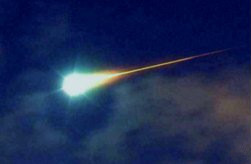




Looking After Your Finds - Reference

A Short History of Metals
Powered By Sispro1

A Short History of Metals
Therefore, before 1800 there were 12 metals in common use:
Gold
Silver
Copper
Lead
Mercury
Iron
Tin
Platinum
Antimony
Bismuth
Zinc
Arsenic
Before 1805 all metals were reduced by either carbon or hydrogen , however, the majority of the metals once smelted were not pure. Refining of gold, that is the separation of silver from gold, has a very old history. During the second millennium it is clear that an amalgamation process using molten lead was used to separate the metal from crushed quartz. The lead then being cupelled to separate the gold and the silver. Purification was then carried further (but not until the first millennium) by a cementing process where a mixture of the alloy was closely mixed with common salt.The silver reacted, formed a chloride which was soluble and easily rinsed off. The cementation process was used until about 1100 A.D. when other refining processes became popular. One method used sulphur addition to the molten bullion to form silver sulfide which was removed as "black" during gentle beating. Mineral acids were developed by the alchemists. Nitric acid was used to dissolve silver in the 1200's as a purification technique. By the end of the 15th century , Stibium (antimony sulfide) was also used in the cementation process. Generally, a mixture of salt, stibium and sulphur was heated with the gold foil.
Gold plating of silver was very popular and in 1250 Bartholommeus Anglicus gave the following advice:
"And when a plate of gold shall be melded with a plate of silver, or joined there to, it needeth to beware namely of three things, of powder, of wind and of moisture: for if any hereof come between gold and silver, they may not be joined together,then one with another: and therefore it needeth to meddle these two metals together in a full cleane place and quiet and when they be joined in this manner, the joining is inseparable, so that they may not afterward be departed asunder,"
This advice is good today. Amalgamation processes were also popular. The gold was dissolved in mercury. The amalgam was coated onto the piece and then heated to drive off the mercury leaving a gold coated piece. Gold could also be removed by the reverse process (1567).
Before 1807 all metals which had been separated had been reduced by either carbon or hydrogen. The separation of other metals needed the invention of the galvanic cell. Sir Humphrey Davy (ref) used the generating pile developed by Volta and demonstrated that water could be decomposed into hydrogen and oxygen . Next he tried a solution containing potash and again gained hydrogen and oxygen. Then he tried a piece of moistened potash which produced at the negative electrode something that burned brightly. His next experiment was decisive, he placed the potash on an insulated platinum dish which was connected to the negative pole of the battery. He then connected the positive pole to the upper surface of the potash and produced small metallic globules. In this manner he produced potassium and sodium.
The Swedish chemist , Berzelius, found that the metals contained in lime and baryta (barium oxide) could also be separated in this way. He used mercury as a cathode which caused the separated metals to dissolve in the mercury. After electrolysis the mercury was distilled away and Calcium and Barium were left behind. Later, Davy produced Strontium by the same technique. By allowing the manufacture of sodium and potassium Davy and Berzelius had opened the door to the reduction of many refractory materials.
In 1817 Cadmium was discovered. Stroymeyer noted that zinc carbonate had a yellowish tinge not attributable to iron. Upon reduction he thought that the alloy contained two metals.
The metals were separated by fractional distillation. At 800 C, as cadmium's boiling point is lower than zinc, the cadmium distilled first.
In 1841 Charles Askin developed a method of separating cobalt and nickel when both metals are in solution. Using a quantity of bleaching powder he found that if the quantity of powder was small enough only cobalt oxide was precipitated and separated. The nickel could then be easily precipitated with lime and a source for pure cobalt and nickel was available. Pure cobalt oxide revolutionized the pottery industry as the blues were now available.
Chromium although it had been produced by reduction with carbon was the first metal to be extensively produced using another metal (zinc). Wohler in 1859 melted chromium chloride under a fused salt layer and attracted the chromium with zinc. The resulting zinc chloride dissolved in the fused salt and chromium produced.In 1828, Wohler produced beryllium by reducing beryllium chloride with potassium in a platinum crucible.
Aluminium was first produced by Christian Oersted in 1825. However it was not until 20 years later that significant quantities were produced. Wohler fused anhydrous aluminum chloride with potassium to set free aluminum. Later Ste Claire Deville in 1854 put together a production process using sodium instead of potassium.
The current from Galvanic cells were also used for electroplating. This was first practiced in the 1830's when silver was deposited on baser metals. After silver plating, copper and nickel plating was developed. In the middle of the 18th century it was found that metallic separation could be carried out by the application of galvanic electricity. The current was passed from an anode made of an impure , crude metal into a suitable electrolyte and the pure material plated out onto a resistant cathode. Impurities present in the crude cathode dropped to the bottom of the vessel and formed a sludge.
From this short review of metallurgical developments it can be seen that as the early metallurgists became more sophisticated their ability to discover and separate all the metals grew. However in all of their work it was necessary for all the basic steps to be carried out e.g. the ore had to be identified, separated from gangue, sized, concentrated and reduced in a manner which accomplished a phase separation.
Suggested Reading
L. Aicheson, A History of Metals, 2 Vols., New York, Interscience, 1960
F. Habashi, Principles of Extractive Metallurgy, Vol. 1, Chpt. 1, Gordon and Breach, Science Publishers, Inc., New York.
The Making, Shaping and Treating of Steel, U.S.S..
Copper Development Association, Copper Through the Ages, London, 1960.
Gold
Silver
Copper
Lead
Mercury
Iron
Tin
Platinum
Antimony
Bismuth
Zinc
Arsenic
Before 1805 all metals were reduced by either carbon or hydrogen , however, the majority of the metals once smelted were not pure. Refining of gold, that is the separation of silver from gold, has a very old history. During the second millennium it is clear that an amalgamation process using molten lead was used to separate the metal from crushed quartz. The lead then being cupelled to separate the gold and the silver. Purification was then carried further (but not until the first millennium) by a cementing process where a mixture of the alloy was closely mixed with common salt.The silver reacted, formed a chloride which was soluble and easily rinsed off. The cementation process was used until about 1100 A.D. when other refining processes became popular. One method used sulphur addition to the molten bullion to form silver sulfide which was removed as "black" during gentle beating. Mineral acids were developed by the alchemists. Nitric acid was used to dissolve silver in the 1200's as a purification technique. By the end of the 15th century , Stibium (antimony sulfide) was also used in the cementation process. Generally, a mixture of salt, stibium and sulphur was heated with the gold foil.
Gold plating of silver was very popular and in 1250 Bartholommeus Anglicus gave the following advice:
"And when a plate of gold shall be melded with a plate of silver, or joined there to, it needeth to beware namely of three things, of powder, of wind and of moisture: for if any hereof come between gold and silver, they may not be joined together,then one with another: and therefore it needeth to meddle these two metals together in a full cleane place and quiet and when they be joined in this manner, the joining is inseparable, so that they may not afterward be departed asunder,"
This advice is good today. Amalgamation processes were also popular. The gold was dissolved in mercury. The amalgam was coated onto the piece and then heated to drive off the mercury leaving a gold coated piece. Gold could also be removed by the reverse process (1567).
Before 1807 all metals which had been separated had been reduced by either carbon or hydrogen. The separation of other metals needed the invention of the galvanic cell. Sir Humphrey Davy (ref) used the generating pile developed by Volta and demonstrated that water could be decomposed into hydrogen and oxygen . Next he tried a solution containing potash and again gained hydrogen and oxygen. Then he tried a piece of moistened potash which produced at the negative electrode something that burned brightly. His next experiment was decisive, he placed the potash on an insulated platinum dish which was connected to the negative pole of the battery. He then connected the positive pole to the upper surface of the potash and produced small metallic globules. In this manner he produced potassium and sodium.
The Swedish chemist , Berzelius, found that the metals contained in lime and baryta (barium oxide) could also be separated in this way. He used mercury as a cathode which caused the separated metals to dissolve in the mercury. After electrolysis the mercury was distilled away and Calcium and Barium were left behind. Later, Davy produced Strontium by the same technique. By allowing the manufacture of sodium and potassium Davy and Berzelius had opened the door to the reduction of many refractory materials.
In 1817 Cadmium was discovered. Stroymeyer noted that zinc carbonate had a yellowish tinge not attributable to iron. Upon reduction he thought that the alloy contained two metals.
The metals were separated by fractional distillation. At 800 C, as cadmium's boiling point is lower than zinc, the cadmium distilled first.
In 1841 Charles Askin developed a method of separating cobalt and nickel when both metals are in solution. Using a quantity of bleaching powder he found that if the quantity of powder was small enough only cobalt oxide was precipitated and separated. The nickel could then be easily precipitated with lime and a source for pure cobalt and nickel was available. Pure cobalt oxide revolutionized the pottery industry as the blues were now available.
Chromium although it had been produced by reduction with carbon was the first metal to be extensively produced using another metal (zinc). Wohler in 1859 melted chromium chloride under a fused salt layer and attracted the chromium with zinc. The resulting zinc chloride dissolved in the fused salt and chromium produced.In 1828, Wohler produced beryllium by reducing beryllium chloride with potassium in a platinum crucible.
Aluminium was first produced by Christian Oersted in 1825. However it was not until 20 years later that significant quantities were produced. Wohler fused anhydrous aluminum chloride with potassium to set free aluminum. Later Ste Claire Deville in 1854 put together a production process using sodium instead of potassium.
The current from Galvanic cells were also used for electroplating. This was first practiced in the 1830's when silver was deposited on baser metals. After silver plating, copper and nickel plating was developed. In the middle of the 18th century it was found that metallic separation could be carried out by the application of galvanic electricity. The current was passed from an anode made of an impure , crude metal into a suitable electrolyte and the pure material plated out onto a resistant cathode. Impurities present in the crude cathode dropped to the bottom of the vessel and formed a sludge.
From this short review of metallurgical developments it can be seen that as the early metallurgists became more sophisticated their ability to discover and separate all the metals grew. However in all of their work it was necessary for all the basic steps to be carried out e.g. the ore had to be identified, separated from gangue, sized, concentrated and reduced in a manner which accomplished a phase separation.
Suggested Reading
L. Aicheson, A History of Metals, 2 Vols., New York, Interscience, 1960
F. Habashi, Principles of Extractive Metallurgy, Vol. 1, Chpt. 1, Gordon and Breach, Science Publishers, Inc., New York.
The Making, Shaping and Treating of Steel, U.S.S..
Copper Development Association, Copper Through the Ages, London, 1960.
[3-3]
Copyright All Rights Reserved by Nigel G Wilcox E-Mail: ngwilcox100@gmail.com
Metals
Group Pages
Complimentary Topics
Designed by Nigel G Wilcox
The Paragon Of Metal Detecting
& Archaeology
& Archaeology
Pages
Member NCMD
Reference Menu




















